Your Ultimate Guide to Gem Mining Tennessee: Unearthing Treasures
The picturesque landscapes of Tennessee are not only pleasing to the eye but also conceal an array of sparkling treasures beneath. Gem mining in Tennessee is a thrilling pursuit, offering both casual adventurers and serious collectors the chance to unearth precious and semi-precious stones. This article will introduce you to the diverse world of Tennessee gemstones, the best places to find them, and how you can embark on this fascinating journey.
The Most Popular Gemstones in Tennessee
Tennessee’s varied geology and favorable conditions have blessed it with an array of gemstones, some more rare and elusive than others. Below are two tables categorizing these gems based on their rarity and prevalence.
Rare Gemstones Found in Tennessee:
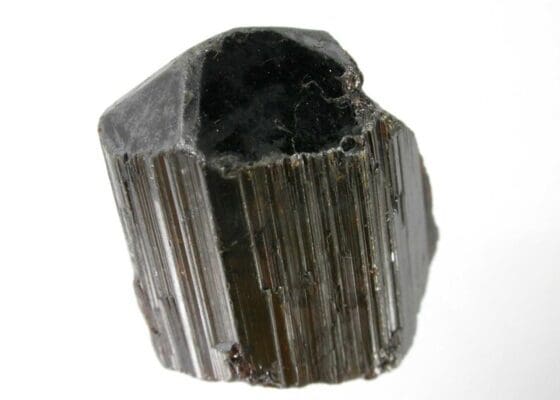
| Gemstone | Description |
|---|---|
| Tennessee Diamond | A quartz variant, not a true diamond, but beautiful and sparkling in its own right. |
| Rutile | A unique, reddish-brown or blackish gem often used as a gemstone in its own right. |
| Tennessee River Pearl | Native to Tennessee’s freshwater sources and comes in various shades and shapes. |
| Blue Garnet | Unlike the typical red garnet, this stone has a stunning blue hue. |
| Paint Rock Agate | Known for its intricate patterns and colorful swirls, primarily found in East Tennessee. |
Common Gemstones Found in Tennessee:
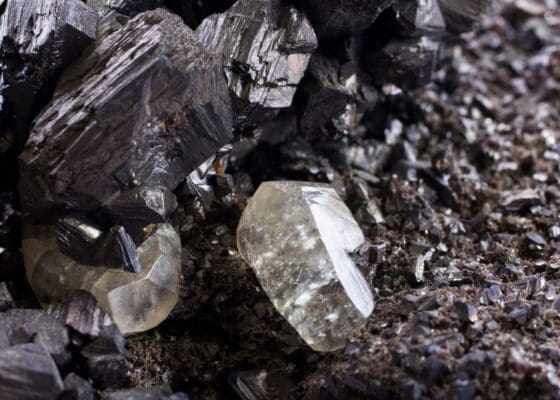
| Gemstone | Description |
|---|---|
| Quartz | Found in various forms across Tennessee, ranging from clear to milky or smoky. |
| Fluorite | Ranges in color from purple, blue, green, to yellow; used both as a gem and in industry. |
| Calcite | Often transparent and can range from white to golden-yellow. |
| Barite | Generally clear or white, it’s a heavyweight among minerals due to its density. |
| Pyrite | Known as “Fool’s Gold” because of its metallic luster and golden hue. |
| Sphalerite | Typically found in brown to red-brown or yellow and can be transparent to translucent. |
| Galena | A lead ore with a metallic luster, often shiny and silver-like. |
| Dolomite | Similar to calcite but typically more durable. Can be found in sedimentary basins. |
| Hematite | An iron oxide that can be silver to reddish-brown, often with a metallic sheen. |
| Chert | Commonly found in limestone regions and can vary from white to dark gray or black. |
From the eastern mountains to the central plains, Tennessee is rich with gemstones. Some of the most popular include the varieties listed above. However, one of the most notable gems specific to the region is the Tennessee River Pearl, found in the state’s freshwater rivers and lakes.
Top Gem Mining Locations in Tennessee

- Cumberland Plateau: Nestled in the northeastern part of the state, the Cumberland Plateau is renowned for its quartz varieties. Operating hours typically range from dawn to dusk, with a fee of around $10 for a day’s pass.
- Pigeon Forge Gem Mine: Located in the heart of Pigeon Forge, this tourist hotspot allows you to sift through pre-filled bags of dirt, guaranteeing a find. They’re open daily from 10 a.m. to 5 p.m., with fees starting at $25 per bag.
- Duck River: A serene location known for the Tennessee River Pearl. The best spots along the river don’t charge fees, but ensure you respect the local environment. It’s accessible all year round, but the spring and fall months are optimal.
- Cherokee Ruby & Sapphire Mine: Located near the border of North Carolina, this mine, while technically outside Tennessee, is a short trip for many residents. It’s open from 9 a.m. to 4 p.m. daily, and fees start at $30 per bucket of ore.
- Cooper’s Gem Mine: Located in Blountville, it offers a fun-filled family experience. Mining packages begin at $10. Open daily, with hours varying by season.
- Smoky Mountain Gold and Ruby Mine: Situated in Cherokee, this is another nearby location for Tennessee residents. Operating from 10 a.m. to 5 p.m., mining prices range based on the bucket size, starting at $10.
- Old Cardinal Gem Mine: Close to the Great Smoky Mountains, this mine specializes in rubies and sapphires. Open from 9 a.m. to 5 p.m., with prices starting at $20 for native buckets.
- Lynch Creek Farm: Located in Rutherford County, it’s a hotspot for garnet hunting. Accessible for a modest fee, they’re open from sunrise to sunset.
- Little Pine Garnet Mine: Found near Marshall, it’s ideal for finding garnets and mica. It’s open from May to October, 9 a.m. to 5 p.m. with an entry fee of $10.
- Lost Mines of Atlantis: While the name might be fantastical, the finds are very real. Located in Sevierville, this location offers flume mining and is open from 10 a.m. to 5 p.m. Prices start at $15 for a small gem bucket.
These mining locations, each with its unique offerings, make Tennessee a gem hunter’s paradise. Always make sure to check with each location for current operating hours and fees before planning a visit.
History of Gem Mining in Tennessee
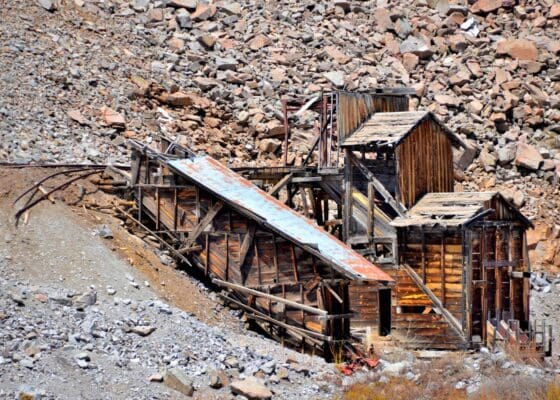
Gem mining in Tennessee is more than just a leisurely activity; it’s a reflection of the state’s rich and colorful history. The foothills and plateaus of this southeastern state have always been a beacon to those seeking hidden treasures, and the story begins long before European settlers set foot on its soil.
The indigenous Native American tribes, primarily the Cherokee and Chickasaw, recognized the value of the land’s resources. They held deep appreciation for Tennessee’s natural gifts and mined various stones, particularly quartz, for ceremonial and trade purposes. The rivers, where the renowned Tennessee River Pearls are found, were especially significant to them. These pearls, with their natural luster and beauty, became symbols of status and were traded far and wide.
The late 18th and 19th centuries saw an influx of European settlers drawn not only by the fertile lands but also by tales of gem-rich mountains and streams. As the population in Tennessee grew, so did the stories of individuals striking it rich overnight. While not everyone could claim large, valuable finds, many residents unearthed gems that brought them modest fortunes. Soon, small mining operations popped up, some of which have transformed into the commercial ventures we see today.
The mid-1900s witnessed a surge in the popularity of gem mining. With the rise of tourism in the state, recreational gem mining became a beloved pastime for both residents and visitors. Tourist towns like Pigeon Forge and Gatlinburg began offering gem mining as an attraction, often coupling the experience with informative exhibits about the state’s mining history.
However, the mining landscape in Tennessee wasn’t always about prosperity. There were challenges. Over-mining in certain regions led to environmental concerns, prompting the state to enforce regulations to preserve its natural beauty and ecological balance.
Today, Tennessee strikes a harmonious blend between its historical gem mining legacy and the need for environmental stewardship. The mines and rivers tell stories of ancient tribes, adventurous settlers, and the endless human quest for beauty and wealth. This history, rich and layered, is as multifaceted as the gems waiting to be discovered beneath Tennessee’s soil.
Gem Mining Regulations in Tennessee
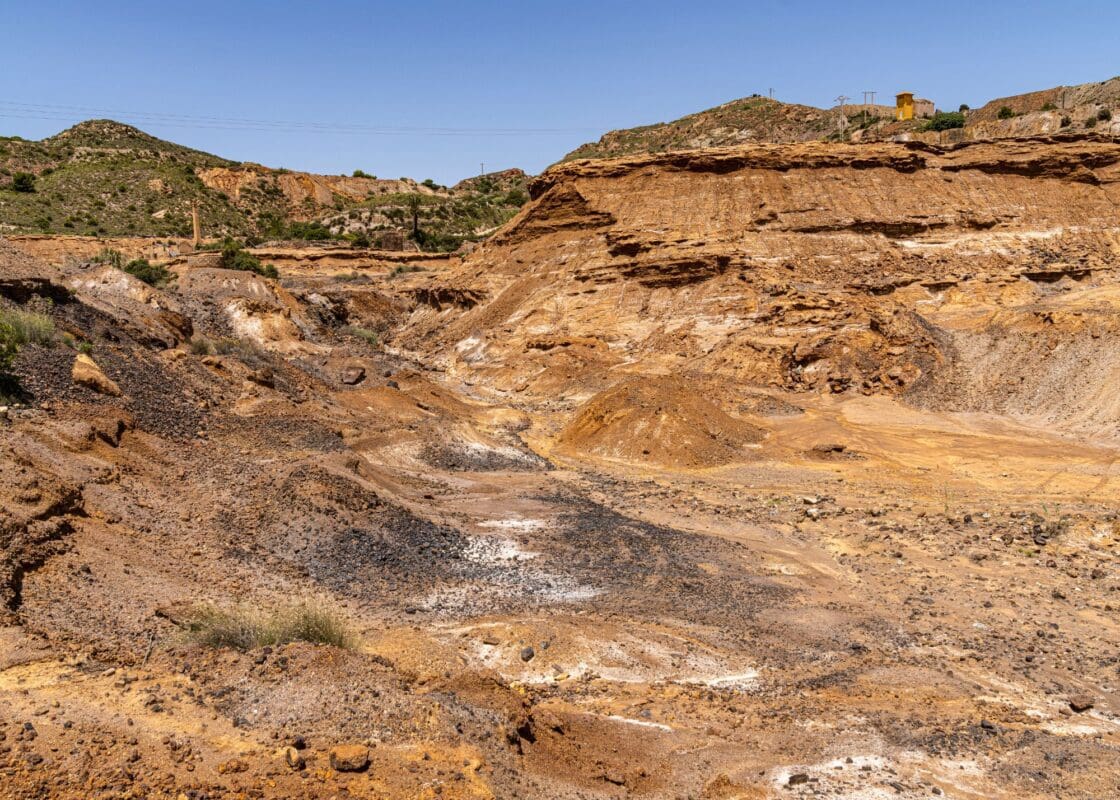
As with any state abundant in natural resources, Tennessee has had to strike a delicate balance between allowing the public to access its mineral-rich terrains and safeguarding these natural treasures from potential over-exploitation. This balance ensures the legacy of gem mining remains sustainable and can be enjoyed by future generations.
For the individual gem hunter, Tennessee is relatively accommodating. Casual, non-commercial gem collectors typically do not require permits to search for and retain gemstones. Such an approach is rooted in the philosophy that families, hobbyists, and tourists should have the freedom to experience the joy of discovering a hidden gem without extensive bureaucratic hurdles.
However, the commercial sphere is a different ballgame altogether. Those looking to set up larger mining operations, especially with the intent to sell, face a more stringent set of regulations. They must acquire proper mining permits and licenses, often involving environmental impact assessments. This ensures that mining activities don’t harm the surrounding ecosystems. For instance, riverbed mining, if done improperly, can lead to soil erosion, which in turn could affect local aquatic life and water quality.
Furthermore, certain regions, particularly state parks or areas deemed of historical or ecological significance, may have strict no-mining policies. Even in areas where mining is permitted, there are often limits imposed on the volume or type of gemstones that can be extracted over a specific time frame.
Safety regulations are another vital component. Mines, especially those that are underground, come with inherent risks. Mines need to adhere to safety standards to ensure that their visitors or workers are not endangered. This can range from ensuring the structural integrity of underground chambers to providing protective gear.
Another dimension to consider is land ownership. Many lands in Tennessee, especially those rich in gems, are privately owned. Prospecting in such areas without permission is not only illegal but can be considered trespassing. Always ensure that you have the necessary permissions from landowners or authorities before embarking on a mining expedition.
In conclusion, while Tennessee warmly welcomes gem enthusiasts, it’s crucial to be well-informed about the regulations governing this activity. This not only ensures a legally compliant and safe gem hunting experience but also plays a part in conserving Tennessee’s rich geological heritage for the years to come.
Necessary Tools and Equipment for Gem Mining in Tennessee
The experience of gem mining is as thrilling as the treasures it might yield. However, the process is as much about preparation as it is about luck or skill. Being well-equipped can make the difference between a fruitless endeavor and a day of rewarding discoveries. Here’s what you’ll need for a gem mining expedition in Tennessee:
1. Screening and Classifying Tools: Reveal those hidden treasures!
Description: These are paramount for sluicing, a method where dirt is placed on the sifter and then immersed in a stream or water source to wash away the mud, leaving potential gemstones behind. Depending on the location, some mines provide these, but it’s always a good idea to have your own.

🛒 Explore Top Screening Sets on Amazon
2. Shovels and Trowels: Digging deep or just scratching the surface?
Description: For digging in dirt or breaking apart rocky terrains, these are essential tools. A small, hand-held size is usually adequate for most amateur gem hunters.

🛒 Find Quality Shovels and Trowels on Amazon
3. Picks and Hammers: The backbone of any gem hunting endeavor.
Description: These tools are ideal for harder terrains, especially when trying to extract gems from rock formations. They can help break apart larger rocks to reveal hidden gemstones inside.

🛒 Check Out Best Picks and Hammers on Amazon
4. Buckets: Your trusted companion for carrying treasures.
Description: Useful for carrying dirt to the sluicing areas or for storing your finds. Some mining sites have running water, allowing for on-site sluicing, while others may require you to carry your dirt to a separate location.

🛒 Shop for Reliable Buckets on Amazon
5. Magnifying Glass: Every detail counts!
Description: To closely inspect potential finds. Many gems in their raw state can look like ordinary rocks. A closer look can reveal the tell-tale signs of a gemstone.

🛒 Grab Your Magnifying Glass on Amazon
6. Guidebooks and Field Guides: Knowledge at your fingertips.
Description: Especially if you’re new to gem hunting or the particular region, a guidebook can help you identify potential gemstones and provide insights into where they might be found.

🛒 Discover the Best Field Guides on Amazon
7. Containers and Bags: Organize, store, and flaunt your finds.
Description: These are essential for storing and organizing the gems you find. Labeling them can also help in remembering the specifics of where and when each gem was found.

🛒 Shop for Storage Solutions on Amazon
8. First Aid Kit: Better safe than sorry!
Description: Accidents, however minor, can happen. Having a basic first aid kit can help address small cuts, stings, or bruises immediately.

🛒 Secure Your First Aid Kit on Amazon
Remember, gem mining is as much a journey as it is a destination. Being well-prepared ensures that the journey is enjoyable, safe, and hopefully, successful!
Tips and Tricks for Successful Gem Mining in Tennessee

Embarking on a gem mining adventure in Tennessee is both exciting and educational. But whether you’re a seasoned prospector or a newbie, a few pointers can enhance your chances of finding those hidden treasures. Here’s some advice to ensure your gem hunting in the Volunteer State is both fruitful and enjoyable:
- Research Beforehand: Before stepping foot into a mining location, take some time to research. Understand which gems are native to that particular region. The more you know, the better your chances of recognizing a valuable stone.
- Arrive Early: Popular mining locations can get crowded as the day progresses. By starting your hunt early, you’ll have the best spots to yourself and can take advantage of the cooler morning temperatures.
- Be Patient and Persistent: Gem mining is not about instant gratification. It’s the thrill of the hunt, and sometimes, it might take hours before you find something noteworthy. Consistency and patience often pay off.
- Seek Local Insights: If you’re at a commercial mining spot, don’t hesitate to ask staff or local miners for tips. They might share insights about promising locations or techniques that have worked in the past.
- Look for Tailings: These are piles of rocks and gravel left behind after miners sift through them. Often, in their eagerness, miners might overlook gems. Going through tailings can sometimes yield unexpected finds.
- Stay Safe: Always prioritize safety. If you’re near water, be wary of slippery rocks. In caves or tunnels, ensure you have proper lighting. Follow any safety guidelines or rules provided by the mining location.
- Be Environmentally Conscious: Always practice responsible mining. Refrain from using chemicals that could harm the environment, and if you dig a hole, fill it back up to prevent hazards for others and wildlife.
- Visit After Rainfall: Rain can wash away loose soil and reveal gemstones on the surface. Post-rain expeditions can sometimes be surprisingly rewarding.
- Practice Makes Perfect: The more you mine, the better you’ll become at spotting potential gems. With each trip, you’ll hone your observation skills and intuition.
- Enjoy the Experience: Remember, gem hunting is as much about the experience as it is about the finds. Enjoy the beauty of nature, the thrill of discovery, and the joy of spending time outdoors.
In conclusion, gem mining in Tennessee is a unique blend of skill, patience, and a touch of luck. But with these tips in mind, you’ll be well-equipped to maximize your chances of a successful and memorable trip.
Handling Your Gemstone Finds

Once you’ve spent a day immersed in the beautiful landscapes of Tennessee, sifting through the earth and water, the joy of discovering a gemstone is unparalleled. However, the journey doesn’t end with the find; it’s equally important to understand how to care for and appreciate these geological wonders. Here’s a guide on handling your newly unearthed treasures:
- Initial Cleaning: Start by gently washing your gems with water to remove any loose dirt or mud. A soft brush, like an old toothbrush, can be helpful in removing stubborn grime without scratching the stone.
- Identification: Before any further processing, identify your find. There are plenty of gemstone guidebooks, or you can consult local experts or gemological institutes. Understanding what you’ve found is crucial before deciding on the next steps.
- Storing: Store each gemstone separately in soft pouches or containers to avoid scratches. Labeling each find, especially if you’re on a multi-day expedition, helps in keeping track.
- Documenting: Maintain a log or journal. Note down where you found the gemstone, its characteristics, and any other pertinent observations. This not only helps in building a personal archive but adds a story to each gem.
- Evaluate: Consider having your gemstones evaluated, especially if you suspect you’ve found something of significant value. Professional gemologists can provide insights into a gem’s quality and potential worth.
- Cutting and Polishing: If you choose to enhance the appearance of your find, you might consider cutting or polishing. This requires expertise, so it’s best to consult with or hire a professional gem cutter for the task.
- Displaying: If you’re passionate about your finds, create a display. Use shadow boxes, glass cabinets, or even make jewelry out of them. They can be beautiful conversation starters.
- Handling with Care: Always handle gemstones with clean hands. Oils and dirt from hands can affect a gem’s luster. For particularly valuable or delicate gems, consider using soft gloves.
- Learn About Enhancement: Some gemstones can have their appearance enhanced through processes like heat treatment or irradiation. If you’re considering this, research or consult experts to understand the implications.
- Sharing and Celebrating: Gem hunting is as much about community as it is about individual finds. Consider joining a local gem and mineral club. Share your experiences, learn from others, and celebrate the thrill of discovery together.
Remember, each gemstone you find, no matter its size or value, tells a story — of time, geological processes, and your personal journey in Tennessee. Cherishing and properly caring for them ensures they remain tokens of treasured memories.
Famous Gemstone Finds in Tennessee
Tennessee, with its rich geological history, has not only been a favorite destination for amateur gem hunters but also the source of some truly remarkable gemstone finds. These discoveries, whether found by accident or through painstaking effort, have etched their way into the annals of gemological history and serve as inspirational tales for all who tread the paths of the Volunteer State in search of hidden treasures.
- The Tennessee River Pearl: Unlike most pearls that originate from oysters, the Tennessee River Pearl comes from freshwater mussels. The state’s rivers, especially the Tennessee River, have historically produced some of the world’s most unique and beautiful pearls, leading to the pearl becoming Tennessee’s official state gem in 1979.
- The Elmwood Mine Celestine: Located in Carthage, the Elmwood Mine is renowned worldwide for its outstanding specimens of celestine crystals. Some of these specimens, with their striking blue hue and pristine clarity, have found their way into major mineral collections globally.
- Tennessee Paint Rock Agate: Highly sought after by collectors, this particular agate is known for its brilliant colors and patterns. There have been instances of spectacular specimens being discovered, making headlines in gem hunting communities.
- The Cumberland Plateau Sapphire: A gem hunter’s dream, this remarkable sapphire find, with its distinctive blue-green shade, proves that Tennessee’s terrain still hides gems that can rival those from traditionally recognized sapphire regions.
- Doubly-Terminated Quartz from the Appalachian Region: In geology, a doubly-terminated crystal has natural points at both ends, a rarity. Such specimens, emerging from the Appalachian regions of Tennessee, are treasured by collectors for their pristine condition and symmetry.
- The Cherokee Ruby: While not exclusively from Tennessee, the Southern Appalachian Mountains, which stretch into the state, have yielded stunning rubies. The Cherokee Ruby, a remarkable specimen from this region, holds a legacy of its own and inspires gem enthusiasts to explore Tennessee’s terrains in hopes of similar discoveries.
- Calcite Crystals from Elmwood: Apart from celestine, Elmwood Mine has also given the world some of its most perfectly formed calcite crystals, with certain specimens featuring the rare golden honey hue.
These tales of extraordinary discoveries offer more than just historical anecdotes; they serve as a testament to Tennessee’s gemological richness. For the gem hunter, stories of past finds offer inspiration and a tantalizing reminder that the next great discovery could be just a stone’s turn away. Every dig, every sift, and every moment spent exploring the state’s varied landscapes bring with them the promise of joining the ranks of those who have unearthed Tennessee’s geological marvels.
Additional Gem Mining Opportunities

For those who’ve caught the gem hunting bug, Tennessee’s surrounding states also offer rich terrains filled with geological treasures. Here’s a look at neighboring states where you can continue your gem mining adventures:
- Kentucky Gem Mining: Known for its beautiful agates, particularly the Kentucky Blue Agate, this state promises rewarding hunts in its riverbeds and fields.
- Virginia Gem Mining: With diverse geology, Virginia boasts finds like garnets, amazonite, and even gold in certain regions.
- North Carolina Gem Mining: A veritable gem haven, North Carolina is renowned for its emeralds, garnets, and the cherished hiddenite.
- Georgia Gem Mining: Home to the state gem, the quartz crystal, Georgia also boasts beautiful amethysts and garnets, particularly in its northern regions.
- Alabama Gem Mining: In Alabama, one can discover star blue quartz, garnets, and the occasional beryl in its diverse geological landscapes.
- Mississippi Gem Mining: While not as prolific as some neighbors, Mississippi still offers gem enthusiasts opportunities, especially for petrified wood and agates.
- Arkansas Gem Mining: Famous for its Crater of Diamonds State Park, where visitors can dig for diamonds and keep what they find, Arkansas is a must-visit for gem hunters.
- Missouri Gem Mining: Missouri, though slightly further afield, promises galena, calcite, and the beautiful drusy quartz.
These neighboring states, each with their own geological stories and treasures, are perfect extensions to your gem hunting journey. The Southeast region of the U.S., with its rich history and varied terrains, truly is a gem enthusiast’s paradise.
Discover more about gem mining locations and tips by reading our comprehensive Gem Mining Near Me guide.
The Captivating World of Gem Hunting and At-Home Adventures
Tennessee’s verdant landscapes, intertwined with tales of gemological wonders, undoubtedly present an allure hard to resist. From the casual hobbyist to the fervent collector, the call of the earth and the promise of unearthing hidden treasures tugs at the heart. The experience of sifting through soil, feeling the textures, and that pulse-quickening moment of discovery is a symphony of nature, history, and personal achievement.
Yet, not everyone has the privilege of time or means to journey into Tennessee’s heartlands. For those yearning for the thrill of discovery from the comfort of their homes, a Gem Mining Kit is the answer. Designed to encapsulate the essence of a real gem hunting expedition, this kit offers a selection of minerals and gemstones waiting to be discovered. It serves as a bridge, ensuring that the joys of gem hunting are accessible to all, anytime and anywhere. Whether you’re in Tennessee’s picturesque outdoors or in your living room, the adventure of gemology awaits.

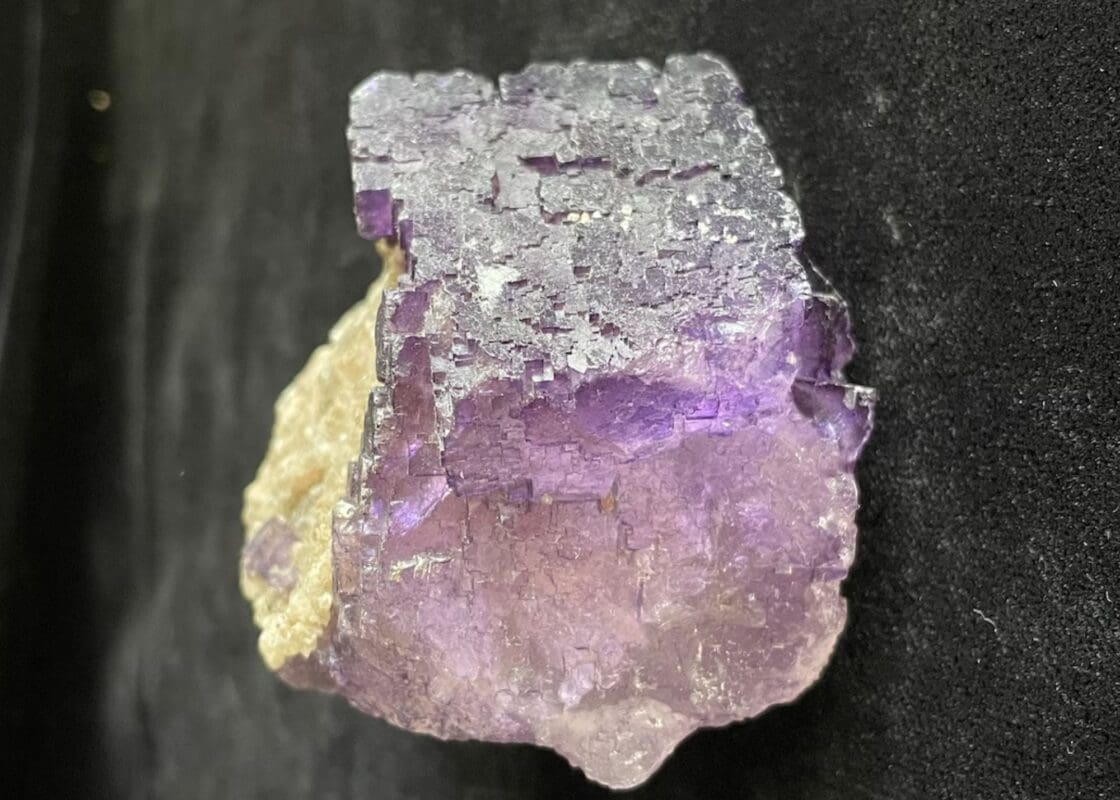
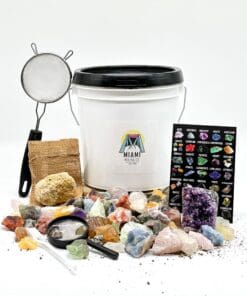
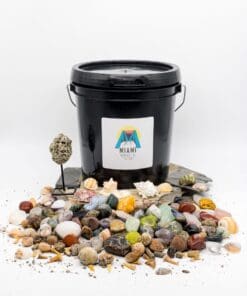
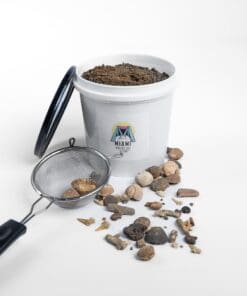
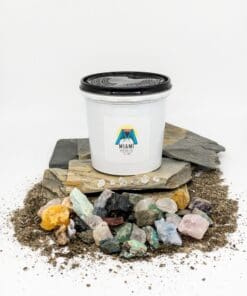
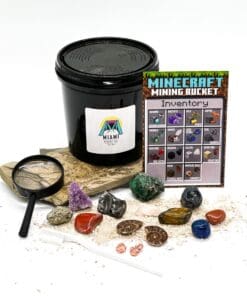
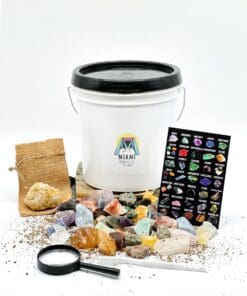
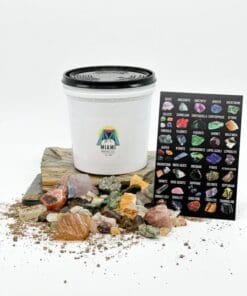


Cool my husband and I are coming your way in early July with my 12 year old granddaughter